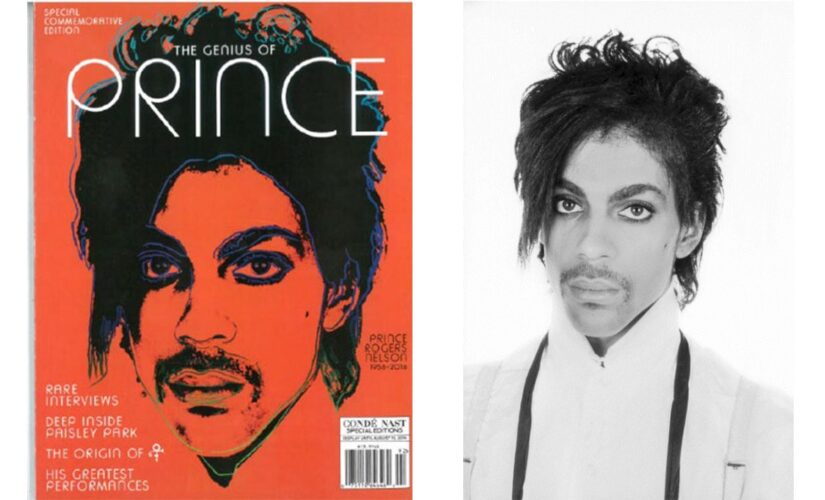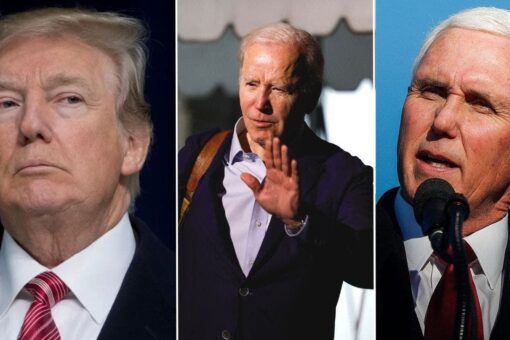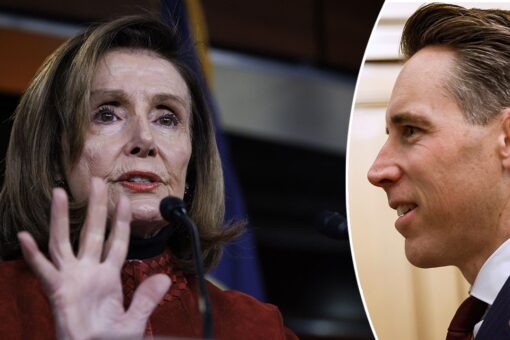Celebrity figures and contested copyrights combined for a spirited oral argument at the Supreme Court Wednesday, in a case testing the meaning and message behind “transformative art.”
The justices debated for nearly two hours in a public session over an image of the late music superstar Prince created by the equally famous late artist Andy Warhol. Photographer Lynn Goldsmith took an iconic 1981 photograph of the singer, which Warhol later used to create a series of silkscreen images that illustrated magazine profiles.
At issue is whether a work of art is transformative if it conveys a different meaning or message from its source material, or instead whether courts cannot consider the meaning if it “recognizably derives from” its source material.
The outcome will have enormous financial and artistic implications in a range of media– including photography, computer-generated graphic art, movie adaptions, television sequels, even news and documentaries.
SUPREME COURT DENIES APPEAL OF DYLANN ROOF, SENTENCED TO DEATH FOR MURDERS AT SC BLACK CHURCH
Andy Warhol photographed in 1973. (Photo by Jack Mitchell/Getty Images)
The court gave no clear signal how it would rule, and tough questions were posed from the bench by all the justices.
Warhol “was a transformative artist because he took a bunch of photographs and he made them mean something completely different. And that’s why he’s hanging up on those museums,” said Justice Elena Kagan. “That’s why it’s hard to look at it and not say… that’s ‘transformation.'”
But Justice Amy Coney Barrett criticized the lawyer arguing for the Andy Warhol Foundation, saying his interpretation of copyright law “risks stretching the concept of transformation so broadly that it kind of eviscerates” the current legal tests for determining a violation.
The court reached no consensus over an admittedly subjective inquiry – just when derivative art crosses a line into a copyright violation. Under “the fair use” doctrine, an artist’s copyrighted work can be appropriated under certain conditions – a legal standard designed to foster further creativity and freedom of expression. Such “transformative” works can be used in commentary, criticism, even parody. It allows an artist like Warhol to license his images without Goldsmith’s permission and without paying her.
That standard has long been debated in the courts, and here the justices are being asked to clarify the standard in the digital age, when artificial intelligence and digital technology makes transforming art easier and more pervasive.
Several justices openly pondered whether their role was to be an art critic divining the meaning of disputed works.
‘GENIUS OF PRINCE’ ARTWORK THE FOCUS OF SUPREME COURT ARGUMENTS IN COPYRIGHT CASE
Goldsmith has worked in several artistic mediums, but is best known for her photographs of rock music artists, gracing the covers of magazines and album covers. She captured Prince on assignment for “Newsweek” magazine when his career was gaining traction, and she describes her studio portrait as capturing the musician’s “vulnerable” side. That particular photo was not used by the news magazine, and Goldsmith held onto it and other images.
Three years later, when Prince’s “Purple Rain” album and movie made him a superstar, “Vanity Fair” magazine commissioned Warhol to illustrate a profile article.
Warhol was himself well-known, for putting unique artistic twists on existing pop-culture subjects, from actress Marilyn Monroe to Campbell’s soup cans. The Warhol Foundation, which was sued by Goldsmith for a copyright infringement, describes him as an “avant-garde artist and a philanthropic visionary.” The foundation itself says, “We value risk-taking; we stand behind work that is challenging in nature, and encourage others to do the same.”
Left: 2016 Vanity Fair cover feat. Andy Warhol’s recreated image. Right: 1981 Lynn Goldsmith photograph of Prince
(Source: Court documents)
Warhol was asked by the magazine to use Goldsmith’s photo as an “artist’s reference” when creating his interpretive collage. Goldsmith was paid a $400 licensing fee by Conde Nast, the “Vanity Fair” publisher of the 16 silkscreens use the same headshot of Prince, with varying shades and color derivations, and hand-drawn outlines. The work has been sold and reproduced in various forms over the years.
In 2016, following the singer’s untimely death, “Vanity Fair” published a special tribute issue, called “The Genius of Prince,” which included a different Warhol image – the “Orange Prince” – on the commemorative cover. The Warhol Foundation was paid a $10,250 licensing fee. Goldsmith was not paid or given a published credit.
It was that second use that prompted Goldsmith to sue.
The Foundations says the Warhol work of art was “transformative” because it was thematically different from the original photo, and presented a new artistic aesthetic that the average audience would distinguish. The group’s lawyer told the court the Goldsmith photo was merely a foundational reference, and that Warhol’s work gave an entirely new meaning of how Prince should be viewed within his celebrity status, now “a flat, impersonal, disembodied, mask-like appearance.”
But a federal appeals court in New York concluded that Warhol’s work was “substantially similar” to the original photo and ruled for Goldsmith.
In the Supreme Court, the justices worried about the implications for both sides.
“If you put them side by side, the message is not the same. The one is Prince’s hair is like this. His expression is like that. The other one’s entirely different,” said Chief Justice John Roberts. “That’s a [Goldsmith] picture of Prince, and this is a [Warhol] work of art sending a message about modern society.”
ENOUGH ALREADY — BIDEN, DEMS AND REPUBLICANS SHOULD STOP TEARING DOWN THE SUPREME COURT
“Very often a popular song will be originally performed by one artist and then other artists come along and perform it in a very different way. Presumably, they think that they are conveying a different meaning or message when they alter the way it’s performed,” said Justice Samuel Alito. “Is it possible that any of them would not be infringing the original copyright?”
Among the creative hypotheticals raised by the lawyers and justices in the argument were the “Mona Lisa” painting, actress Elizabeth Taylor, and the “Mork & Mindy” TV spinoff show.
Several members of the court suggested throwing the case back to the lower courts, without fully resolving the larger legal questions presented. The justices in 1994 ruled that a version of Roy Orbison’s classic song “Pretty Woman” by the hip-hop group 2 Live Crew amounted to parody and was protected by fair use.
The current case has attracted a wide variety of amicus – or supporting – briefs from a range of interest groups, including libraries, museums, digital licensing firms, the motion picture industry, even Dr. Seuss Enterprises.
As for Prince, count at least one justice an admirer.
Associate Supreme Court Justice Clarence Thomas speaks at the Heritage Foundation on Oct. 21, 2021, in Washington, DC.
(Drew Angerer/Getty Images)
“Let’s say that I’m both a Prince fan, which I was in the ’80s…” said Justice Clarence Thomas, introducing a hypothetical.
Justice Kagan playfully jumped in, asking “No longer?”
Thomas paused and suppressed a giggle. “Well – so only on Thursday night.” His colleagues and the courtroom burst into laughter.
He continued, “But let’s say that I’m also a Syracuse [University] fan and I decide to make one of those big blowup posters of ‘Orange Prince’ and change the colors a little bit around the edges and put ‘Go Orange’ underneath” for the school’s colors.
“Would you sue me for infringement?” he asked one of the attorneys, who said that was a real possibility.
DOWNLOAD THE FOX NEWS APP HERE
“I think my colleague, Justice Thomas, needs a lawyer,” added Justice Sonia Sotomayor a few minutes laughter, to even louder courtroom laughter. “And I’m going to provide it.”
The case is Andy Warhol Foundation for the Visual Arts, Inc. v. Goldsmith, Lynn (21-869). A ruling is expected in coming months.




